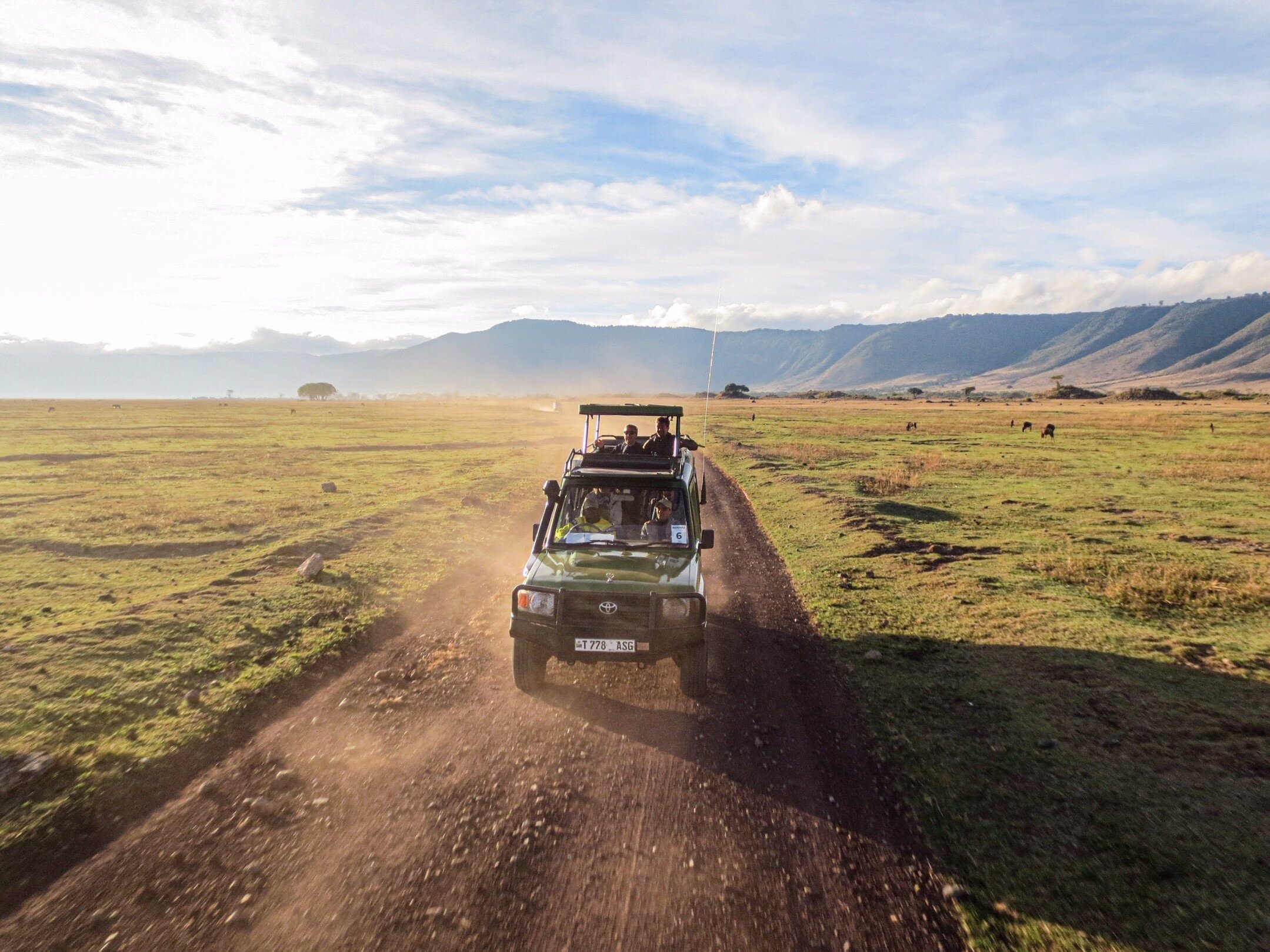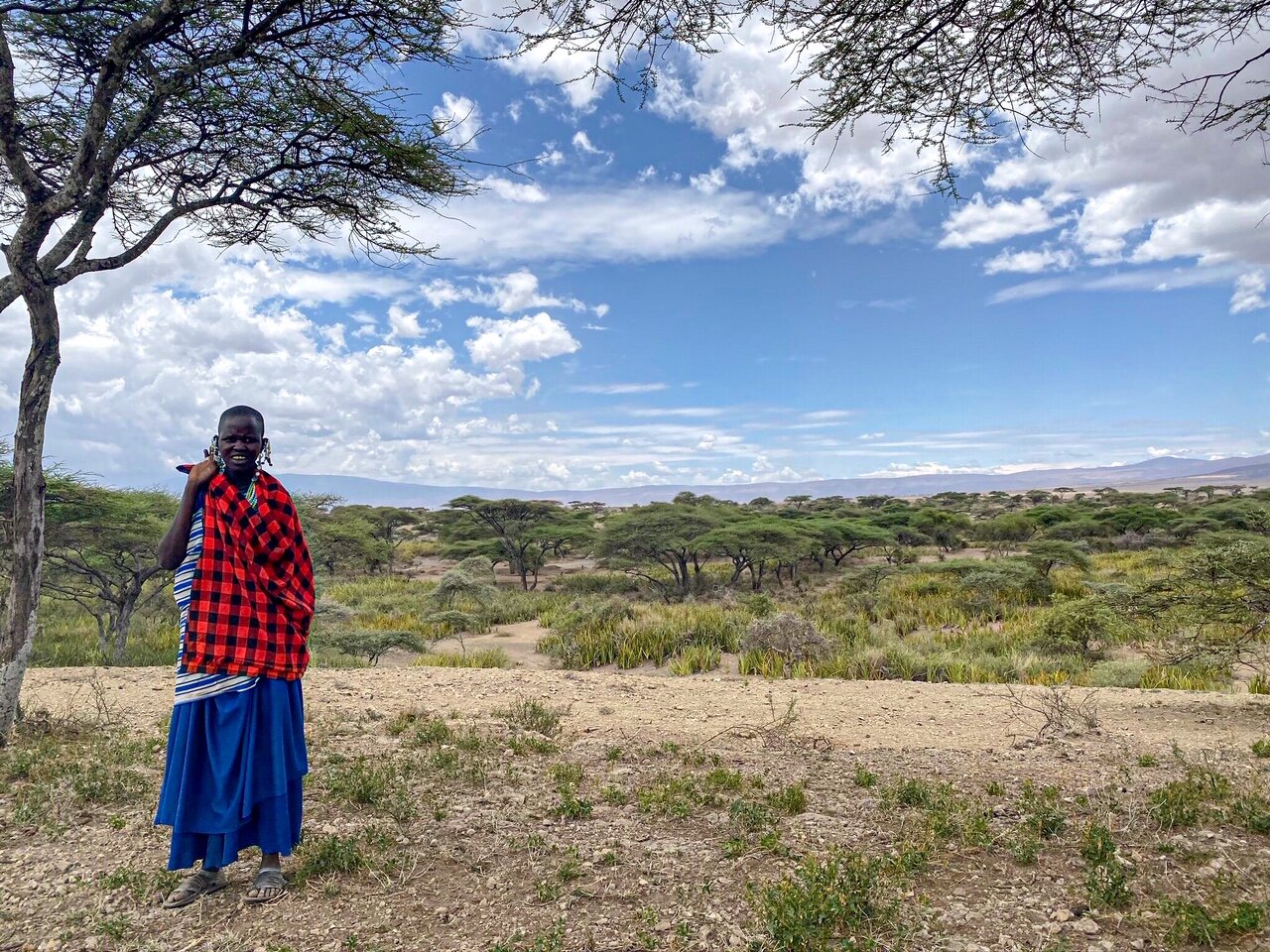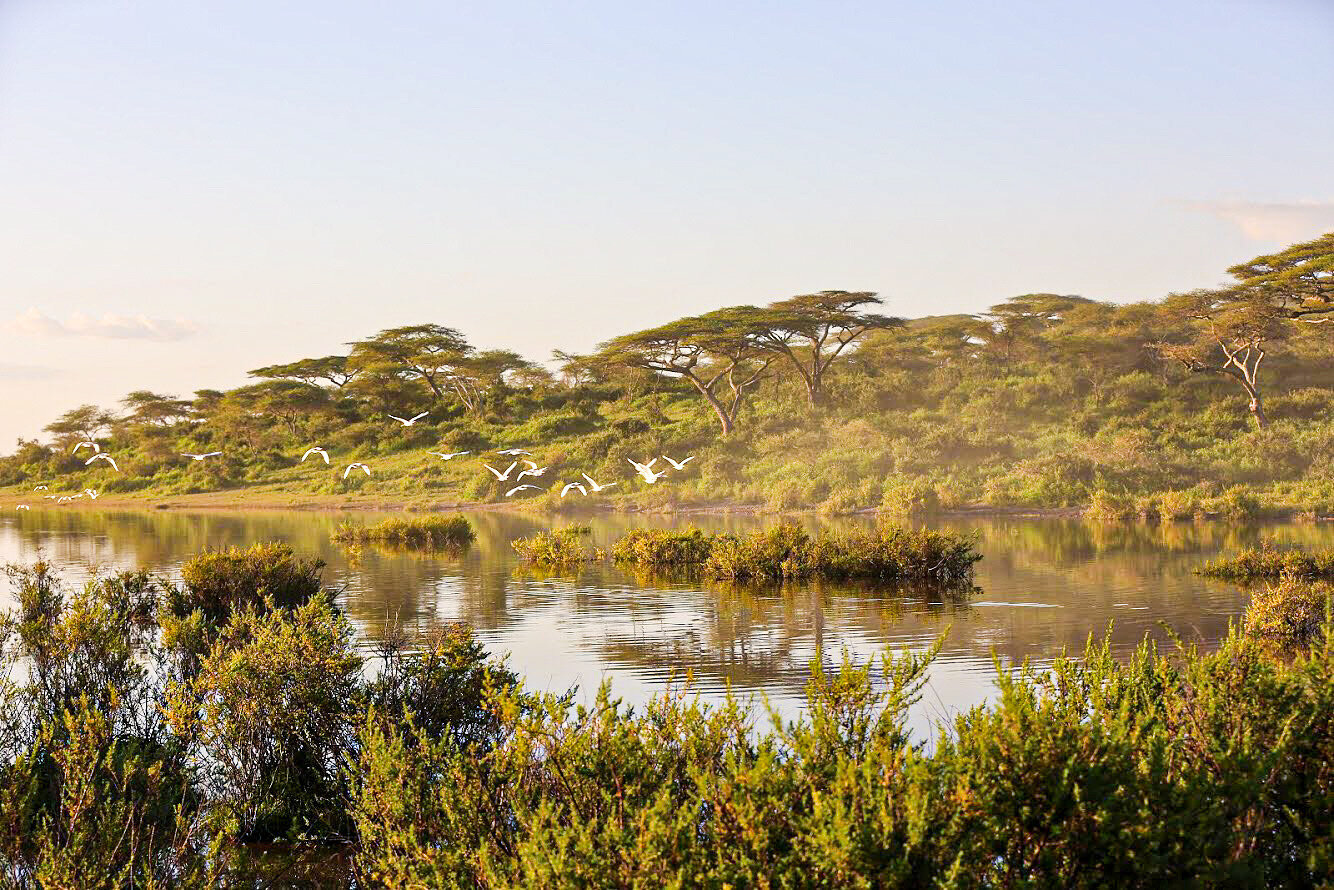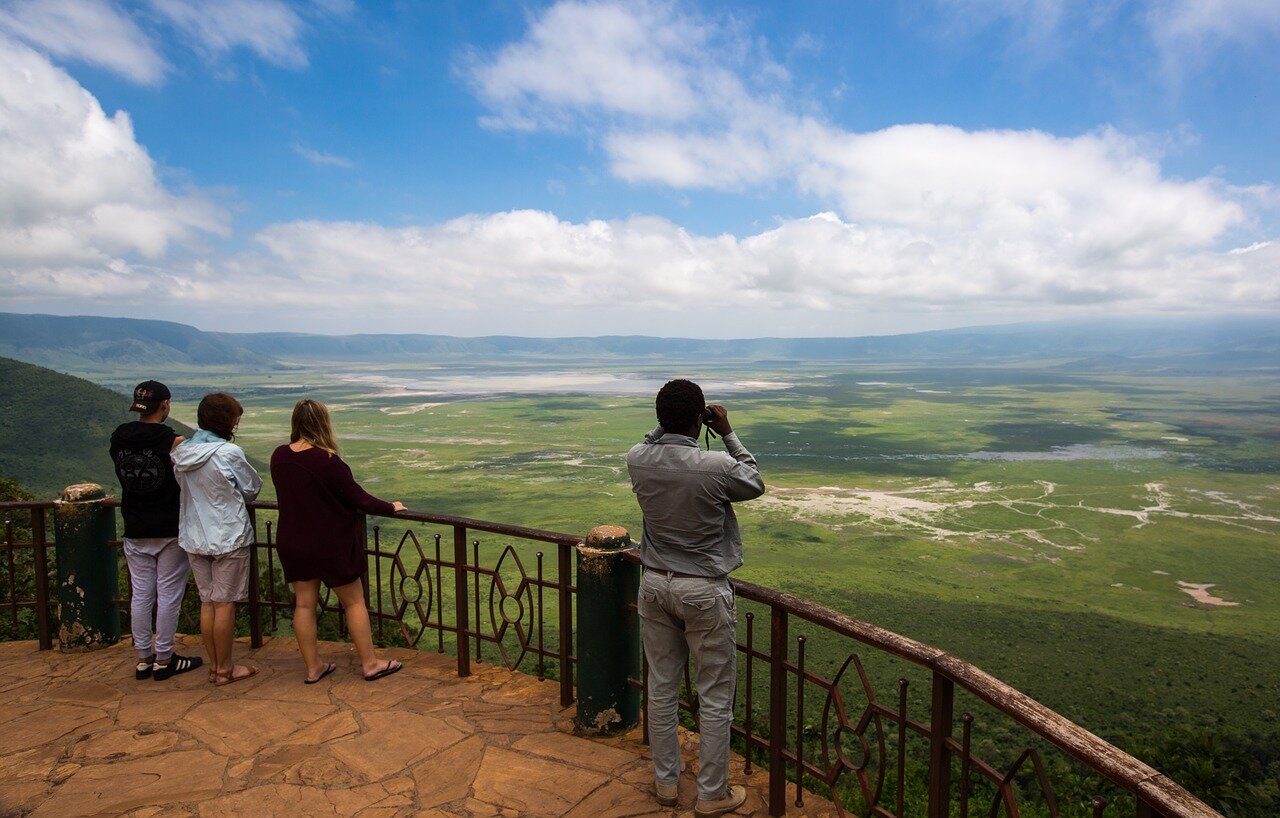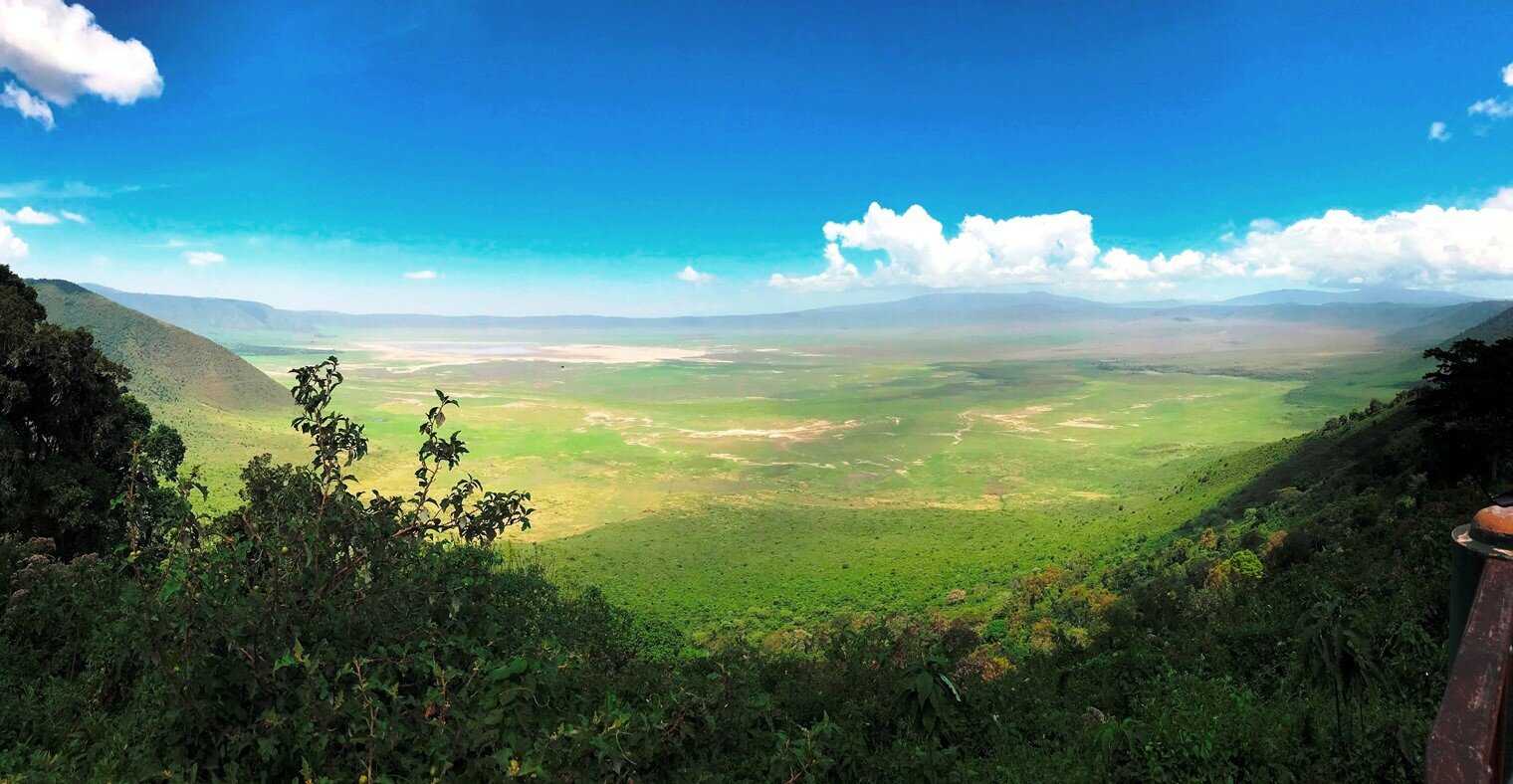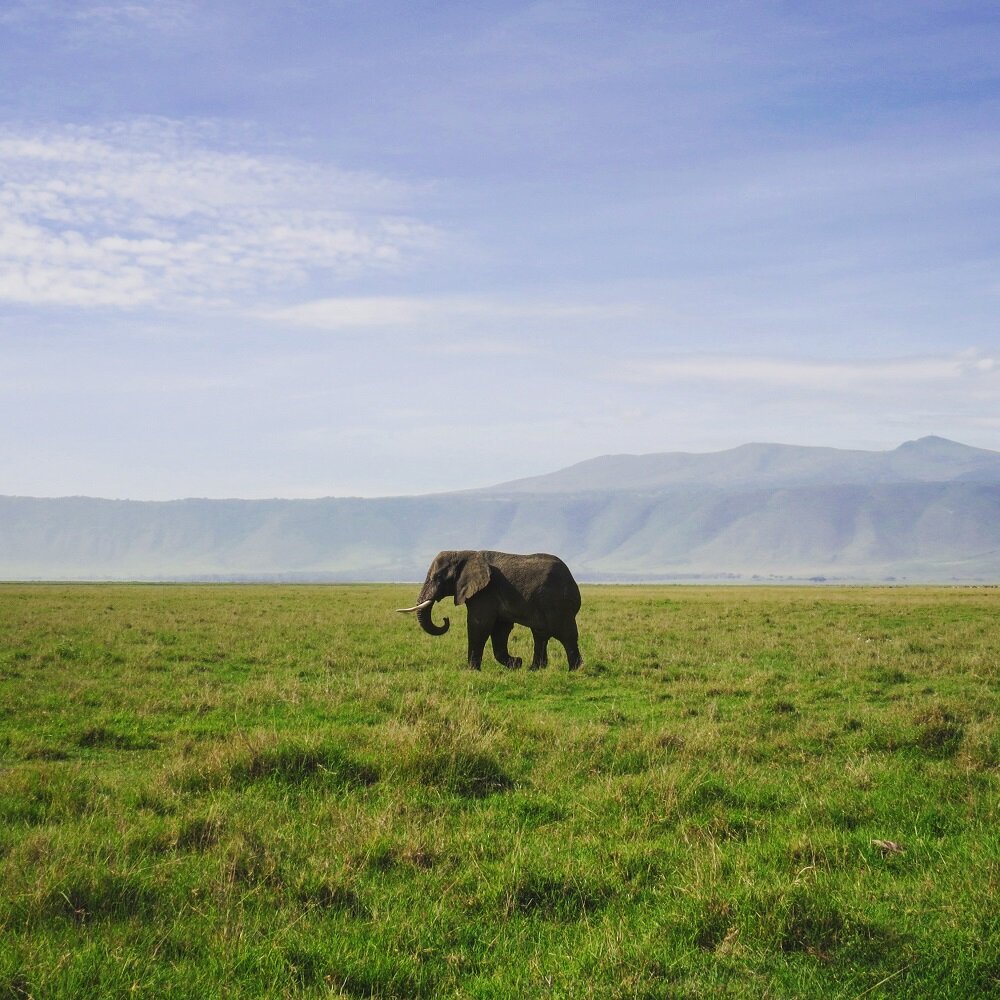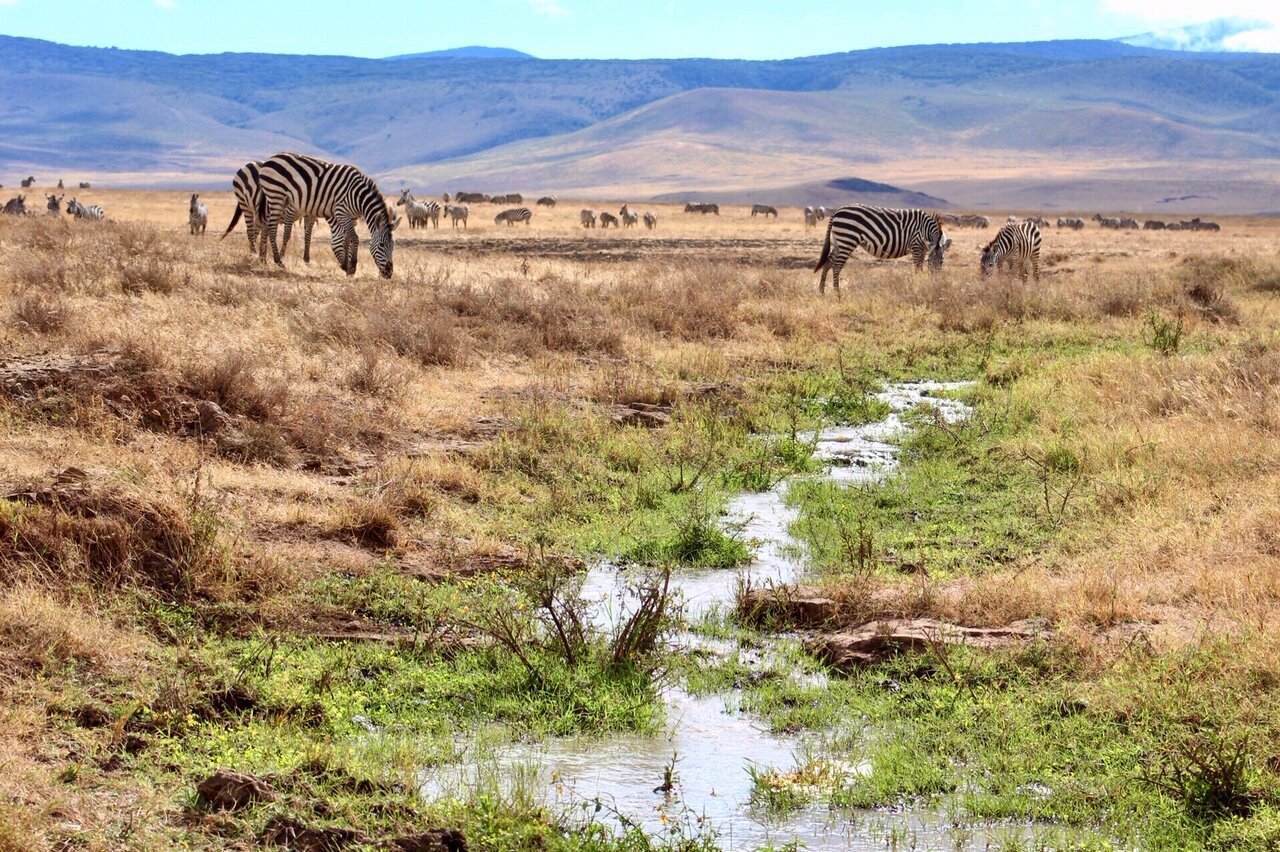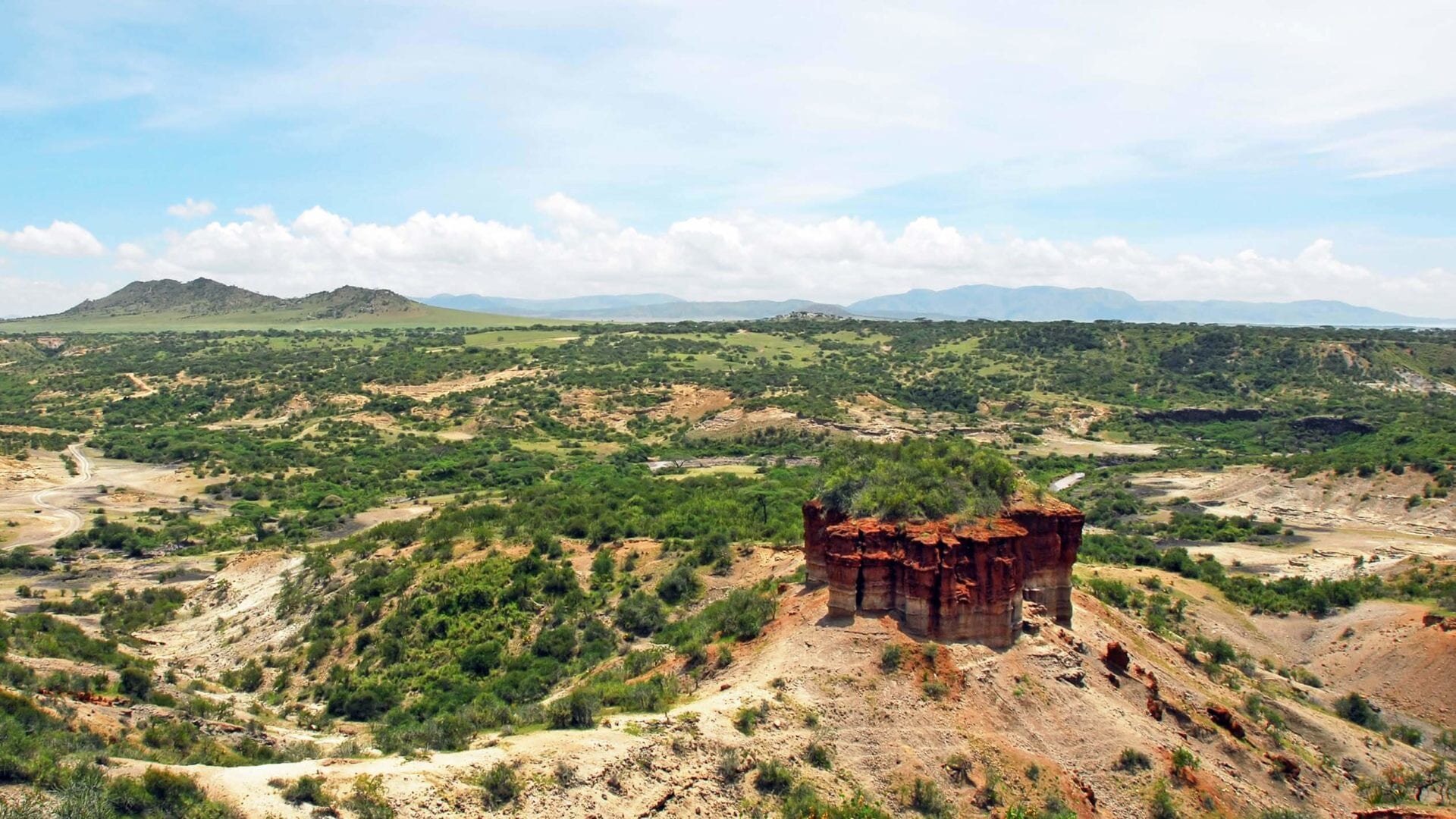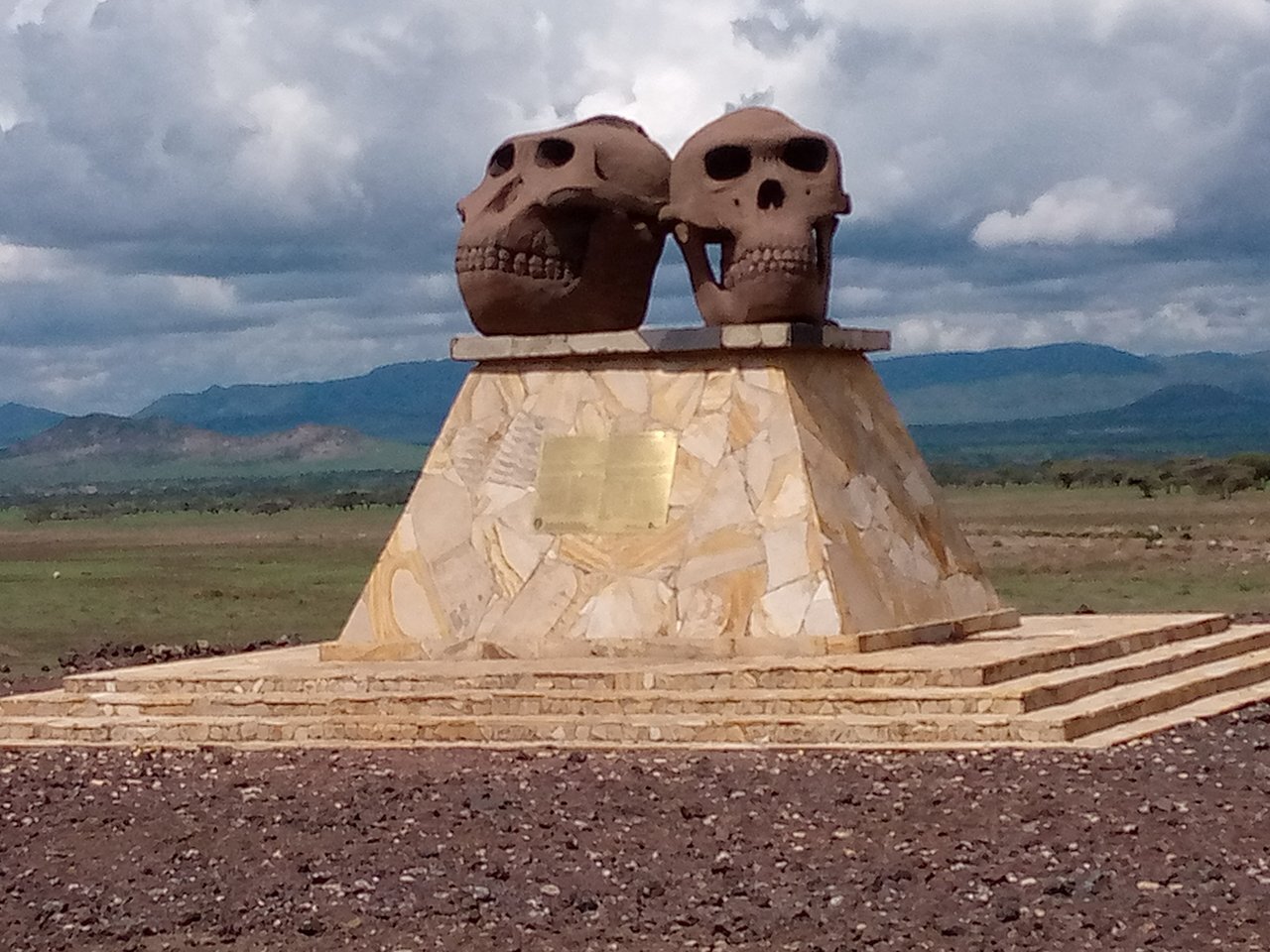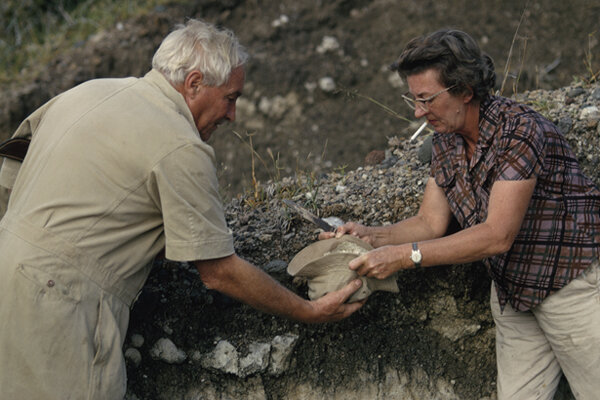EMBARK ON A NGORONGORO CRATER SAFARI
Join Sababu Safaris on a safari through the Ngorongoro Conservation Area! Explore its three spectacular volcanic craters, the Olduvai Gorge, and its huge expanses of savannah, forest and bush land. This unique place is the flagship of Tanzania's tourism industry and it’s perhaps the second most popular safari destination in Tanzania, alongside Serengeti National Park.
Measuring 8,300 square kilometers, Ngorongoro Conservation Area (NCA) is also the only place on earth where man and wild animals harmoniously co-exist. The NCA was declared a World Heritage Site by UNESCO in 1979. Originally part of Serengeti National Park in 1951 when established by the British, the Ngorongoro Conservation Area Authority (NCAA) was formed in 1959, separating it from the Serengeti. The land inside the area is multi-use, providing protection status for wildlife while also permitting humans to live there. The NCA is where man, livestock and wild animals live in peace, which makes it unique. Zebras can sometimes be seen grazing alongside Maasai cattle on the grassland—what more could you ask from a Tanzania safari?
The NGORONGORO Conservation Area is a World Heritage Site
The NCA's wildlife and land has been a UNESCO site since 1979, and now its cultural heritage is to be included. It’s the only site in the world with human communities and a high concentration of wildlife living in harmony. The multiple land use systems are among the earliest to be established around the world as a way to reconcile conserving natural resources and human development. The Ngorongoro Conservation Area also contains many archaeological, paleontological and anthropological sites of exceptional quality. If you’re interested in the cultural offering of traveling in Tanzania, and the Ngorongoro Crater in particular, you should check out our unique Sababu Tanzania Experiences. You have the opportunities to meet the people of Tanzania, either having experiences that positively impact their lives or simply learning about their culture first hand in a sensitive and responsible way.
your holiday in the NGORONGORO Crater
Had it not become the world's largest inactive, unbroken and unfilled volcanic caldera, then what is now known as the Ngorongoro Crater could have been a towering volcanic mountain as high as Kilimanjaro, and a Ngorongoro Safari might look a little different...The crater in the Ngorongoro Conservation Area is its flagship tourism feature. It’s a large, unbroken, un-flooded caldera, that was formed when a giant volcano exploded and collapsed approximately three million years ago. It sinks to a depth of 610 meters, with a base area covering 260 square kilometers. The height of the original volcano is thought to have ranged between 4,500 to 5,800 meters high. Ngorongoro also has two other volcanic craters in addition to the main caldera: Olmoti and Empakai. The former is famous for its stunning waterfalls and the latter for its deep lake and lush, green walls. On the leeward side (protected from the wind) of the Ngorongoro Highlands is the iconic Ol Doinyo Lengai, Tanzania's third highest peak after Kilimanjaro and Meru, and an active volcano. Known to the locals as the Mountain of God, it had its last major eruption in 2007. At the foot of the mountain is Lake Natron, East Africa's major breeding ground for flamingos. Check our guide to Lake Natron to learn more.
Wildlife on a ngorongoro safari
The Ngorongoro Conservation Area contains over 25,000 large animals including approximately 26 black rhinoceros (the exact number is unknown in order to protect them). Higher up in the rainforests of the crater rim you’ll find large elephants, leopards, mountain reedbuck, buffalos, rare wild dogs, spotted hyenas, jackals, cheetahs, and other felines. The crater also has the densest-known lion population.
Also making its way through Ngorongoro is the annual zebra and wildebeest migration, when approximately 2 million ungulates move south into the area in December then move back out in June to head north. The migrants passing through the plains of the NCA include 1.8 million wildebeest, 200,000 zebra, and 350,000 gazelles. To the west, the Lake Ndutu area has a large population of cheetah and lion. Over 500 species of bird have also been noted within the Ngorongoro Conservation Area, including white pelican, ostrich, and greater and lesser flamingo on Lake Magadi within the crater and Lake Ndutu.
Vegetation in the ngorongoro conservation area
Ngorongoro is home to desert plants as well as lush green, rain-watered vegetation . The area has abundant short grass used for grazing, arid and semi-arid plant communities, uncultivated lowland vegetation and highland forests.
On Oldeani Mountain and Pencil Cedar on Makarut Mountain to the west there are extensive stretches of pure bamboo. Dove-weeds are prominent on the lower slopes, while the upland woodlands are home to Red Thorn Acacia and Gum Acacia -critical for protecting the watershed. Scrub heath, high open moorland, grasslands and what’s left of the dense evergreen forests cover the slopes of the crater, while highland trees including Yellow-Wood, Kousso (Hagenia abyssinica), Peacock Flower and Sweet Olive are also found. All of this makes it truly unique, and a wonderful stop on of our Photography Safaris in Tanzania.
The basin of the crater is covered by open short grass plains with fresh water lakes, swamps, marshes, and two patches of Acacia woodland. Laiyanai Forest has Pillar Wood and Acacia Lahai while the Lerai Forest is home to the Yellow Fever tree and Acacia. The plains to the west are grass-covered with occasional Umbrella Acacia and Commiphora Africana trees. In the drier conditions besides Lake Eyasi, Blackthorn Acacia and Zebrawood dominate. These vast grasslands and bush are rich, relatively untouched by cultivation, and support large populations of animals.
the ngorongoro crater is Where human life began
At the far end of the NCA stands the archaeological site Olduvai Gorge, widely regarded as the cradle of mankind and the most important prehistoric site in the world.
The earliest remains of homo sapiens were discovered here by Dr. Louis and Mary Leakey over 50 years ago and anyone with an interest in mankind’s ancestors will be fascinated by this extraordinary place. Look in wonder at the rugged landscape and explore their quaint little museum. This paleo-anthropological site is a steep-sided ravine in the Great Rift Valley composed of two branches that have a combined length of about 48 km and are 90 meters deep. A treasure trove of fossil remains have been yielded by the deposits exposed in the sides of the gorge cover. Based on the evidence discovered at Olduvai Gorge, it’s believed that a number of hominid species have continuously lived in the crater for the last three million years. The gorge is named after the Maasai word for the wild sisal plant: oldupaai.
Accommodations by ngorongoro crater
The area has some of the best lodges in Tanzania, such as the classic Ngorongoro Crater Lodge, along with the newer established Ngorongoro Serena Lodge and the Ngorongoro Sopa Lodge as well as Lion’s Paw Camp. These facilities are all located along the crater rim. The NCA also has several campsite areas in the Ndutu region.
Famous visitors to the ngorongoro conservation area
About 450,000 tourists visit Ngorongoro every year, accounting for 60 per cent of the tourists visiting Tanzania annually. Famous visitors include former United States President Bill Clinton, the Reverend Jesse Jackson, the Queen of Denmark Magrethe II, Chris Tucker, John Wayne, Prince William, and the entire delegation attending the 2008 Leon Sullivan Summit taking place in Arusha National Park. Some of the scenes from the Oscar winning film Out of Africa and John Wayne's Hatari were filmed in Ngorongoro. In addition to the above-mentioned attractions, visitors can also experience cultural tourism or eco-tourism in various Maasai bomas and settlements. Gibbs Farm, located near Karatu along the NCA perimeters, specializes in this. Conducted from within the Northern Highland Forest Reserve, there are also nature trail expeditions by the Endoro River, where visitors can see elephant caves, enjoy bird watching, marvel at waterfalls that are 150 meters high and learn about the local flora.
If you have any questions about the Ngorongoro Conservation or about how we can create for you a truly bespoke Tanzania Safari that stops off in this incredible place, then please feel free to contact us. What are you waiting for? Start planning your once-in-a-lifetime Tanzania safari holiday!

